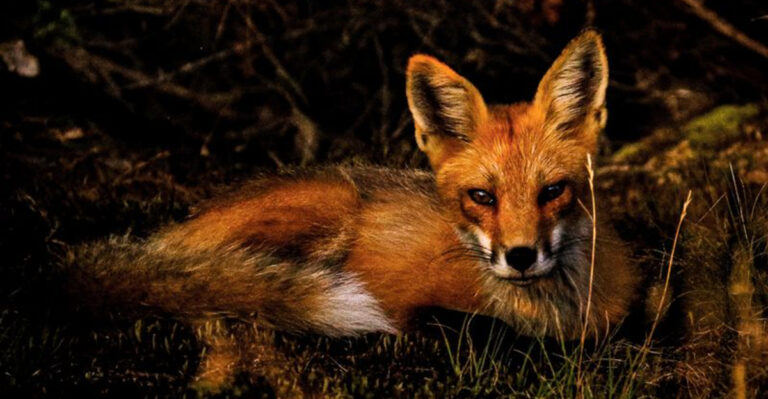13 Invasive Animals Wreaking Havoc In Florida’s Ecosystems

Florida’s delicate ecosystems face a growing threat from animals that don’t belong there. These unwelcome visitors have no natural predators, allowing their populations to explode while native species struggle to survive.
From slithering snakes to destructive swine, these invasive creatures are dramatically altering the Sunshine State’s natural balance in ways that could take generations to repair.
1. Burmese Python

Slithering silently through the Everglades, these massive constrictors have become the poster child for Florida’s invasive species problem. Released by irresponsible pet owners, they’ve established a breeding population that devours native mammals and birds at alarming rates.
Female pythons can lay up to 100 eggs annually, creating a nearly impossible eradication challenge. Their impact has been so severe that raccoon, opossum, and bobcat populations have plummeted by over 90% in some areas.
2. Feral Swine
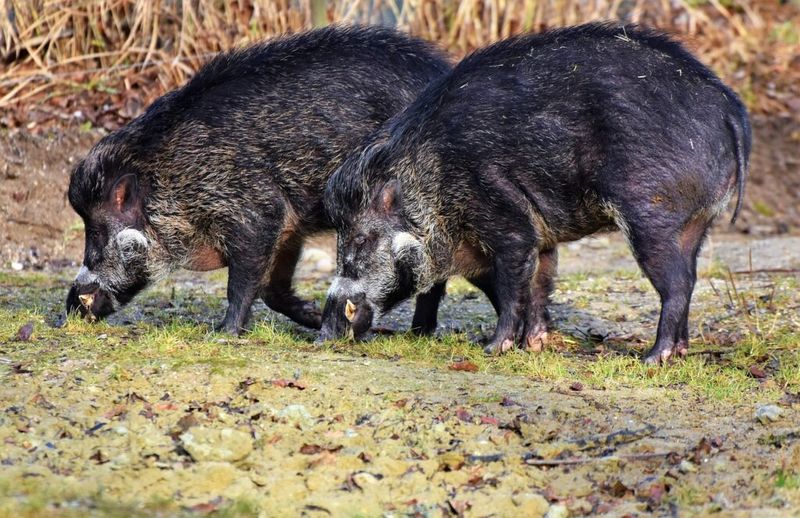
Descendants of pigs introduced by Spanish explorers 500 years ago, these tusked troublemakers now number over half a million across Florida. Their rooting behavior tears up native vegetation, creating barren mud pits where diverse ecosystems once thrived.
Natural bulldozers with insatiable appetites, they consume everything from rare plants to endangered sea turtle eggs. Their rapid reproduction rate—producing two litters yearly with up to 12 piglets each—makes control efforts particularly challenging.
3. Green Iguana
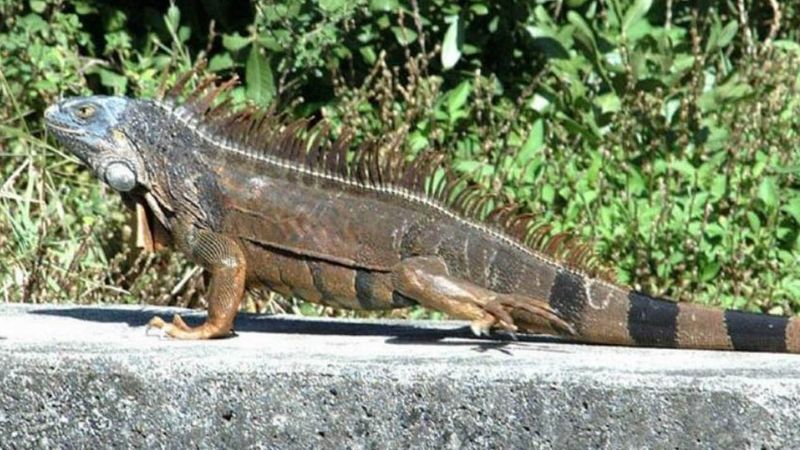
Sunbathing on seawalls and swimming pools, these prehistoric-looking reptiles might seem harmless but pack a destructive punch. Originally from Central America, they’ve found paradise in Florida’s warm climate where they feast on native plants and flowers.
Their extensive burrows undermine sidewalks, seawalls, and canal banks, causing costly infrastructure damage. Female iguanas lay clutches of 40+ eggs, allowing populations to multiply rapidly despite occasional cold snaps that temporarily reduce their numbers.
4. Cuban Tree Frog

Nocturnal invaders with sticky toe pads, these amphibians hitchhiked to Florida on cargo shipments decades ago. Now they’re everywhere—clinging to windows, hiding in potted plants, and lurking in toilet bowls where they deliver quite the surprise!
Their voracious appetite for native frogs, lizards, and small snakes disrupts the food chain. When threatened, they secrete a milky substance that irritates human skin and can temporarily blind pets who make the mistake of investigating them too closely.
5. Argentine Black-And-White Tegu
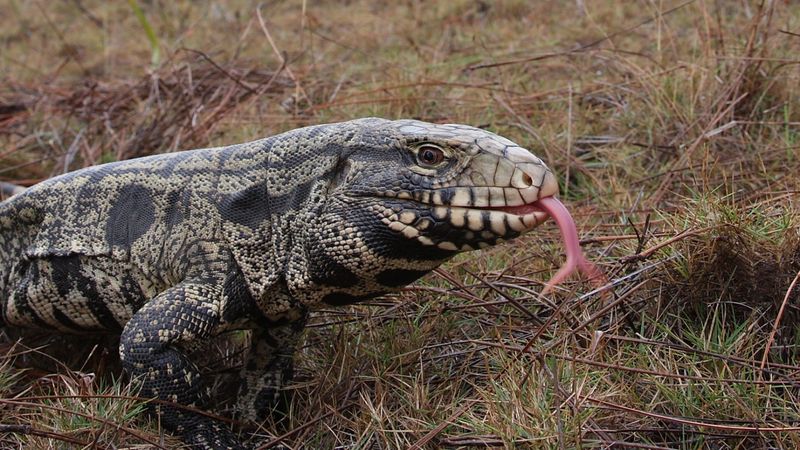
Intelligence combined with appetites make these lizards Florida’s reptilian nightmare. Growing up to four feet long, tegus possess the unfortunate combination of being smart enough to avoid traps yet hungry enough to eat almost anything they encounter.
They raid nests of turtles, alligators, and ground-nesting birds, decimating future generations of native wildlife. Cold-tolerant compared to other invasive reptiles, they’re expanding their range northward beyond Florida’s borders into Georgia and South Carolina.
6. Giant African Land Snail
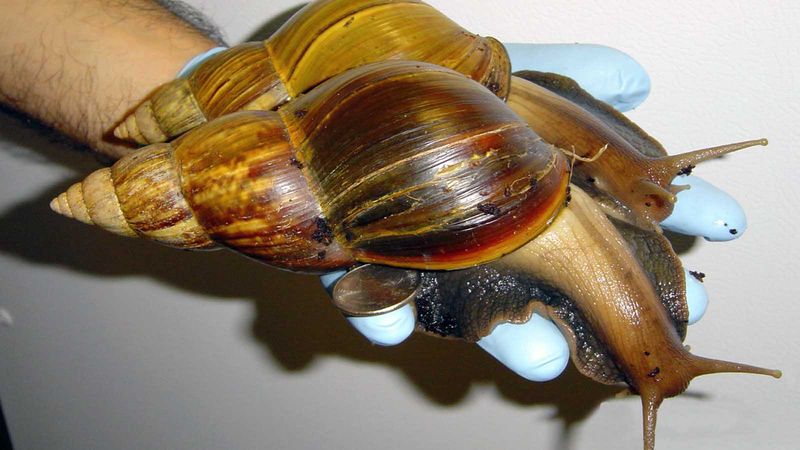
Florida has fought multiple battles against this slimy invader, spending millions on eradication efforts. The size of a human fist, these gastropods devour over 500 plant species and even consume stucco off houses to satisfy their calcium needs!
Beyond property damage, they carry rat lungworm parasites that cause meningitis in humans. A single snail can produce 1,200 eggs annually, with each capable of living up to nine years—creating a persistent threat that keeps resurfacing despite control efforts.
7. Cane Toad
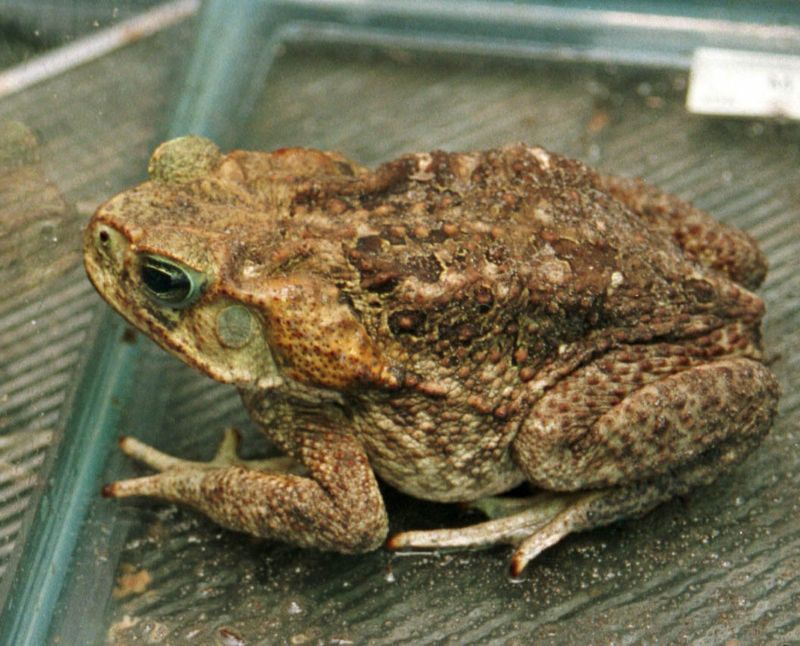
Originally imported to control sugarcane pests, these toxic toads became the pest. When threatened, they secrete a milky poison from glands behind their heads potent enough to kill dogs and native predators within minutes of contact.
Ravenous appetites drive them to consume almost anything that fits in their mouths—insects, pet food, smaller frogs, and even bird eggs. Their tadpoles outcompete native amphibians, while adults thrive in human-modified environments like yards and golf courses.
8. Nile Monitor Lizard
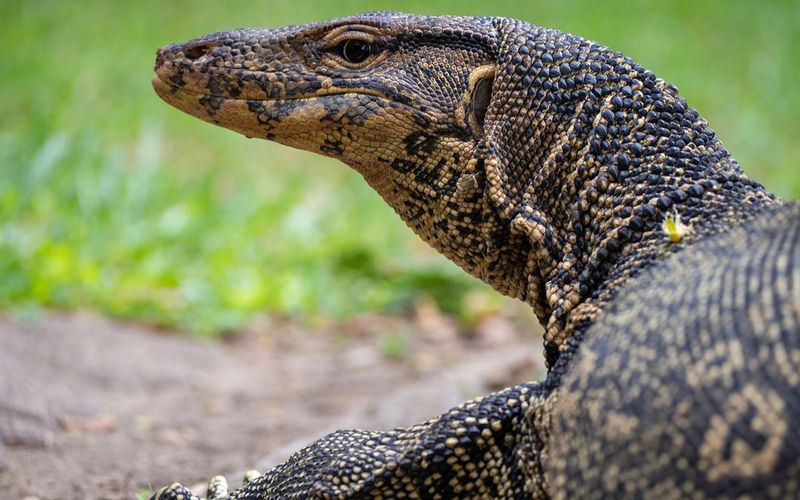
Escaped pets have established breeding populations of these aggressive African predators in Florida’s canals and waterways. Growing over six feet long, they combine swimming prowess with tree-climbing abilities and surprising bursts of speed on land.
Sharp teeth and powerful jaws make them formidable hunters of fish, birds, and small mammals. Their taste for eggs threatens endangered sea turtles and American crocodiles, while their aggressive temperament makes them dangerous to handle during removal efforts.
9. Rhesus Macaque
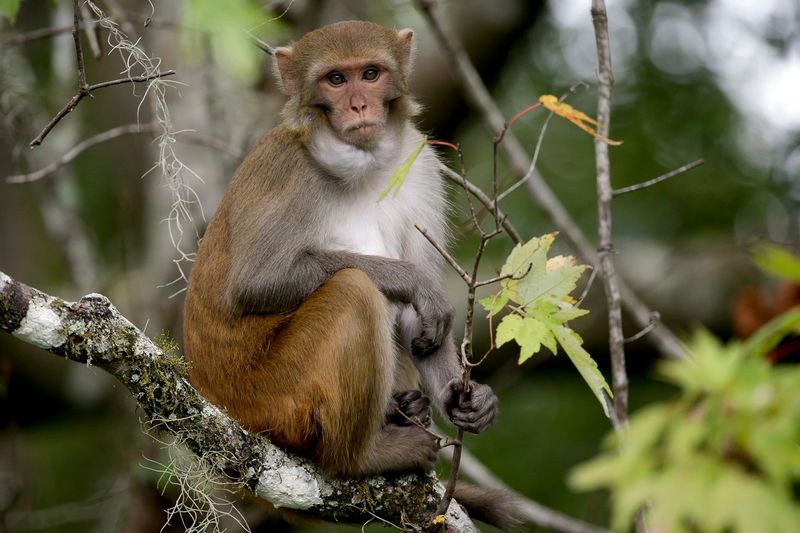
Monkeys swinging through Florida trees weren’t part of the natural order until a tour boat operator released them in the 1930s to enhance his jungle cruise attraction. Several troops now thrive along the Silver River, feasting on over 50 plant species and occasional bird eggs or small animals.
Beyond ecological impacts, they carry herpes B virus—harmless to them but potentially fatal to humans. Their intelligence makes management challenging, as they quickly learn to avoid traps and can become aggressive when habituated to people.
10. Northern African Python
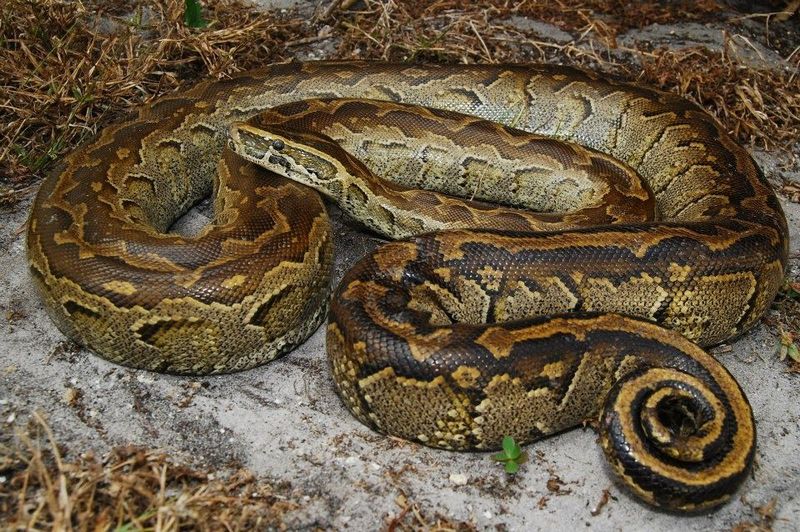
Living in the shadows of their more famous Burmese cousins, these massive constrictors established a foothold in Miami-Dade County. Wildlife officials are racing against time to eliminate them before they spread beyond current boundaries.
Growing to 20 feet long, they consume mammals as large as deer and compete directly with native apex predators. Their camouflage abilities make detection difficult until populations are well-established, by which point eradication becomes nearly impossible—a lesson learned from the Burmese python invasion.
11. Red-Eared Slider Turtle
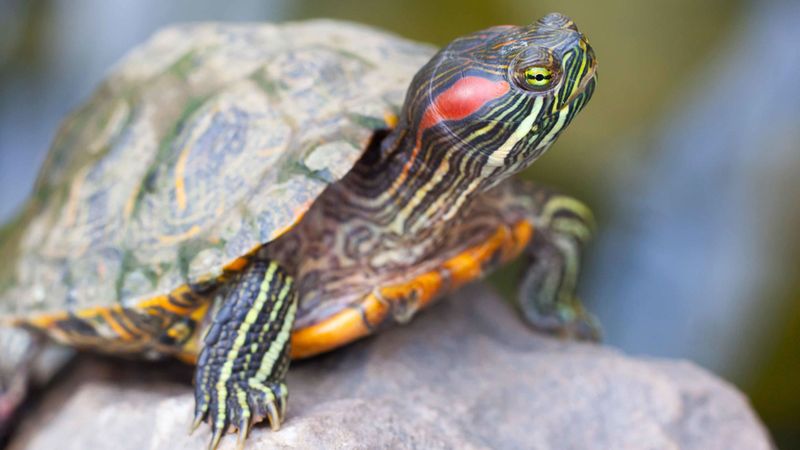
Recognizable by their distinctive red stripes, these popular pet turtles often end up dumped in local waterways when owners tire of their care. Unfortunately, they outcompete native turtles for food, nesting sites, and prime basking spots needed for thermoregulation.
Female sliders can store sperm for years, producing multiple clutches long after a single mating. Their adaptability to polluted waters gives them advantages over native species in urban areas, while their omnivorous diet ensures they rarely go hungry.
12. Gold Tegu
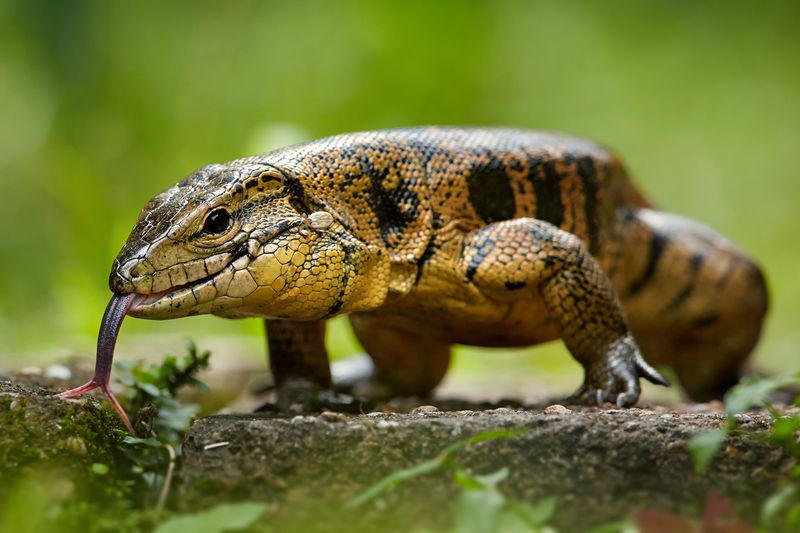
Sporting a striking golden hue that pet enthusiasts covet, these South American lizards have established breeding populations in Miami-Dade County. Less studied than their black and white cousins, they nevertheless share the same destructive habits and omnivorous appetite.
Gold tegus bulldoze through underbrush creating extensive burrow systems that can destabilize building foundations. Their intelligence allows them to remember food locations and recognize human handlers, making them difficult to trap once they’ve learned to associate humans with danger.
13. Monk Parakeet
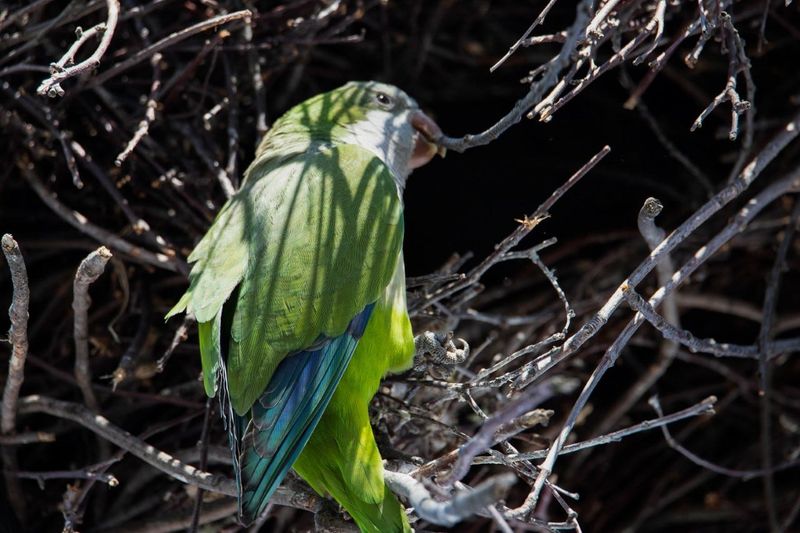
Brilliant green flashes and cheerful squawks might seem like pleasant additions to Florida’s skies, but these South American natives bring unexpected problems. Unlike most parrots that nest in tree cavities, monk parakeets build massive communal stick nests weighing up to 400 pounds.
Their preferred nesting sites? Electrical transformers and utility poles, where nests cause power outages affecting thousands of residents. Despite their destructive habits, their charismatic appearance has garnered public support, complicating control efforts and allowing populations to flourish across the state.




